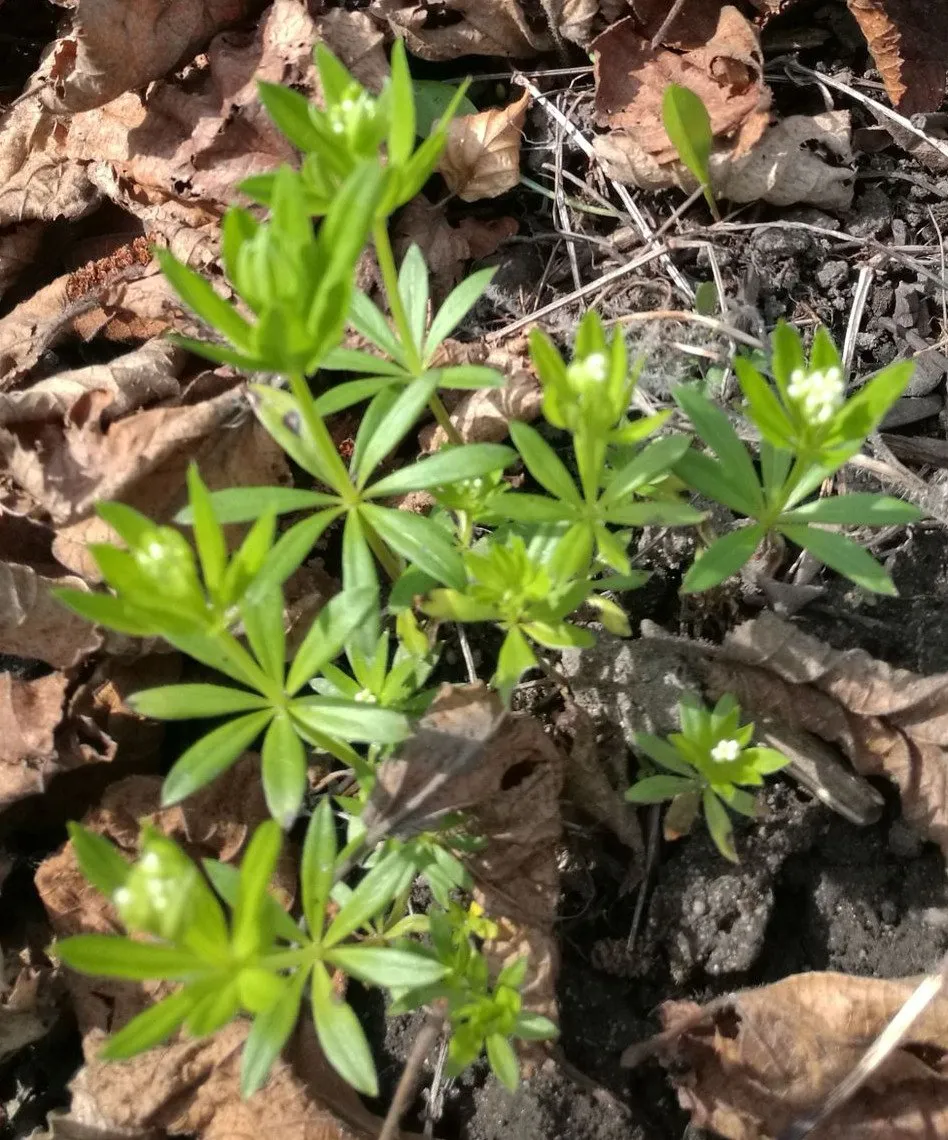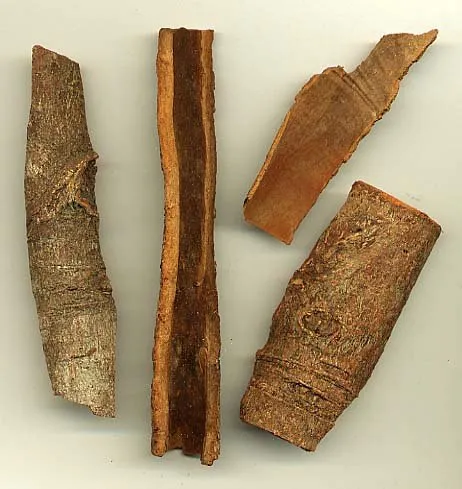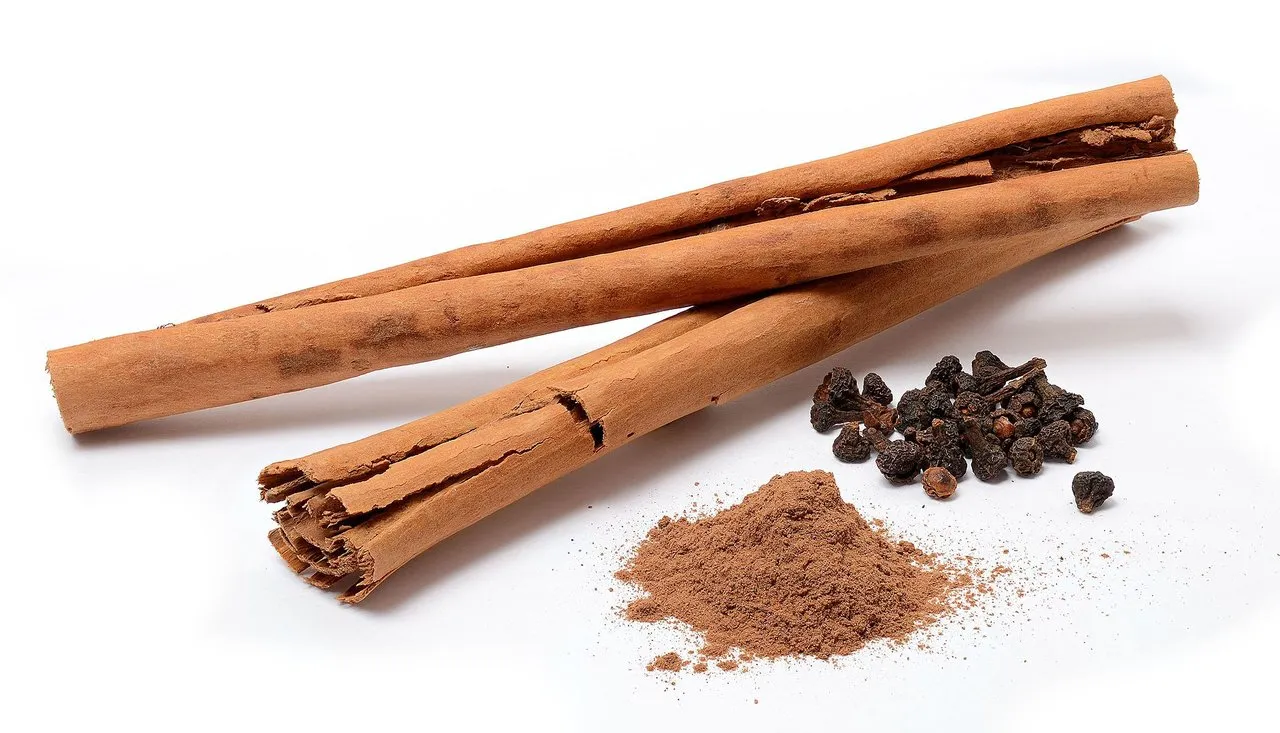I have to admit that I really love cinnamon (its taste and fragrance) and use it as spice in rice pudding, cookies, on waffles and in different kinds of teas. Even the operating system of my laptop is called 'Linux Mint Cinnamon'. :-)

Source: Pixabay
Benefits of consuming cinnamon
Cinnamon aficionados won't get tired to point out several health benefits associated with this condiment. I just name a few now:
-
Hoehn and Stockert showed that daily cinnamon supplements caused a statistically significant decrease in the blood sugar levels of type II diabetics.[1] As some of the positive changes lasted even when the probands didn't take supplements anymore, Stockert assumed that one of the proteins involved in gene expression had been affected by cinnamon.[2]
Her hypothesis is that one of the various polyphenolic compounds of cinnamon could be responsible for the positive impact by binding at the protein Sirtuin-1 (or Sirt-1; an enzyme which affects insulin regulation). Utilizing a computer model the female researcher and colleagues tested if the polyphenolic ingredients of cinnamon may have a similar effect like the antioxidant component of red wine, resveratol, which is able to activate Sirt-1 and in addition is believed to have anti-aging and cholesterol-lowering qualities.
According to the results of the computer simulations some of the cinnamon components showed even stronger interactions with Sirt-1 than resveratol.[3] “If cinnamon interacts with this enzyme in the way our model suggests, it could possibly be linked to anti-aging, antioxidant control, a lot of really important health benefits” Stockert says.[2] -
In a fantastic article @justtryme90 just recently pointed out that cinnamon could play an important role in fighting against obesity. But just read yourself.[4]
-
It even looks like cinnamon could increase the ability to learn. Scientists at Rush University Medical Center in California observed that a metabolic product of cinnamon, sodium benzoate[5] changed bad learning mice into good learners.[6] In hippocampal neurons of fast learners the concentration of CREB (a protein involved in learning and memory) is higher than in the hippocampus (the memory storage of our brain) of poor learning rodents. However sodium benzoate (beside other impacts) stimulated the activation of CREB in the brains of the slow learning mice via protein kinase A (PKA) causing an upregulation of various molecules which increase hippocampal plasticity and thus the ability to learn and memorize new things.
-
If that was not enough to convince you, I suggest you to read the review about cinnamon by Pasupuleti Visweswara Rao and Siew Hua Gan based on a large amount of literature on cinnamon from 1982 to 2013. The list of possible benefits is indeed impressive: "In addition to being an antioxidant, anti-inflammatory, antidiabetic, antimicrobial, anticancer, lipid-lowering, and cardiovascular-disease-lowering compound, cinnamon has also been reported to have activities against neurological disorders, such as Parkinson's and Alzheimer's diseases."[7] Hmmm, OK, enough read, where did I put the box of cinnamon again? Let's eat some cinnamon before continuing to write my article ... :-)
Potential risk of eating (too) much cinnamon
Unfortunately beside all these positive effects of cinnamon there is also one possible bad one: beside many other interesting active agents this condiment contains also coumarin.[8]
This molecule is known for its hepatotoxic and carcinogenic properties if consumed in high doses. Based on animal hepatotoxicity data the European Food Safety Authority determined a tolerable daily intake (TDI) at a value of 0.1 mg/kg body weight. However, as clinical data showed a subgroup of the human population (for still unknown reasons) reacts more sensitive to coumarin than the investigated animal species and thus has a higher risk of liver damages.[9]
|
That's cinnamic acid (or 3-Phenylacrylic acid, C6H5CHCHCOOH)[10] with an aromatic ring on the left side and the typical carboxyl group (-COOH) of carboxylic acids on the right side.
|
And that's coumarin (C11H6O2). You can see the two planar aromatic[11] rings, where one of them is heterocyclic because it contains not only C atoms but also an O atom.
|
By the way coumarin cannot only be found in cinnamon but also in some other plants, for example in 'sweet woodruff' (Galium odoratum[12]). The delicious May wine (Maibowle) flavoured by 'sweet woodruff' gets its aroma from the coumarin component as well.
Galium odoratum:

Own photo from a shady place in our garden.
Does the ingredient coumarin spoil the 'cinnamon party'?
Well, if you are ready to pay somewhat more money you may be allowed to eat more cinnamon, too (as always the world seems to be made for the rich people ...): actually there are two kinds of commercially available cinnamon plants, the very frequently offered and cheaper 'Chinese cinnamon' (Cinnamomum cassia[13]) and the rare and more expensive 'Ceylon cinnamon' (Cinnamomum verum[14]).
On the left side you see the bark of Cinnamomum cassia, on the right Cinnamomum verum.
|
|
|
While Cinnamomum cassia (which originated in Southern China) contains about 1 % coumarin, Cinnamomum verum (native to Sri Lanka and southern parts of India) comprises only 0.004 % (which is 250 times less).[15] Considering that it is much safer to use Cinnamomum verum instead of its relative, especially in case one belongs to the groups of humans which reacts more sensitive than average to coumarin.
Conclusion: if you chose the right cinnamon species the party can continue. :-)
Sources:
- https://www.ncbi.nlm.nih.gov/pmc/articles/PMC3698471/
- http://time.com/4751426/why-cinnamon-is-insanely-good-for-you/
- https://app.core-apps.com/eb2017/abstract/05269568c4077b5a162e9981c2466df5
- /@justtryme90/can-cinnamon-help-reduce-the-obesity-epidemic-cinnamon-has-been-observed-to-convert-white-fat-to-brown-fat
- https://en.wikipedia.org/wiki/Sodium_benzoate
- https://link.springer.com/article/10.1007%2Fs11481-016-9693-6
- https://www.ncbi.nlm.nih.gov/pmc/articles/PMC4003790/
- https://en.wikipedia.org/wiki/Coumarin
- https://www.ncbi.nlm.nih.gov/pubmed/20024932
- https://en.wikipedia.org/wiki/Cinnamic_acid
- https://en.wikipedia.org/wiki/Aromaticity
- https://en.wikipedia.org/wiki/Galium_odoratum
- https://en.wikipedia.org/wiki/Cinnamomum_cassia
- https://en.wikipedia.org/wiki/Cinnamomum_verum
- https://authoritynutrition.com/ceylon-vs-cassia-cinnamon/



